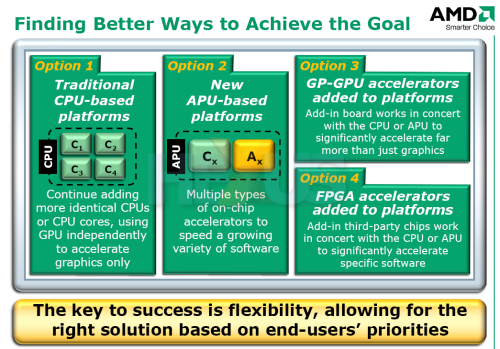Introduction

Phil Hester - AMD CTO (Chief Technology Officer) and senior VP - has the (un)enviable multi-faceted role of ensuring that AMD's technical innovations correlate with financial success in the years to come.

Reiterating a simple but oft-overlooked fact, Hester commented that overall user experience is a product of both excellent hardware (CPU, for example) and software (operating system) engineering: one is inextricably linked to the other.
To that end, AMD is committed to working with developers to ensure that its hardware - be it CPU or GPU - is best utilised in the most efficient and effective way possible. Thinking of present times, NVIDIA's developer-relations' budget is larger than ATI's (AMD's), such that the latter's engineering prowess isn't, we feel, fully realised, leading to lower-than-anticipated benchmark scores.
Leading on from this, Hester reckons the optimum method of ensuring the best-possible user experience is to re-think whether the current hardware divide between CPU and GPU makes sense, and how performance can be increased if elements of each are integrated, especially as certain software code runs faster on a particular type of architecture.

AMD is of the opinion that silicon-level integration of the CPU and other workload-specific accelerators is inevitable, that multiple homogeneous cores will become subservient to chips based on heterogeneous accelerators. In effect, then, and citing the notebook sector as an example, Hester reckons that a CPU-only architecture makes little or no sense any more when additional transistor and space budget can be allocated to accelerators that provide more performance for the typical user's intended workload.
Citing the economic principle of 'tipping point', where a technology/architecture is adopted and integrated when it becomes pervasive enough - the math co-processor into the 486, as an example - AMD sees multiple processing cores on one die, with each having strengths in different areas, and that's where the APU (Accelerated Processing Unit) comes in.









